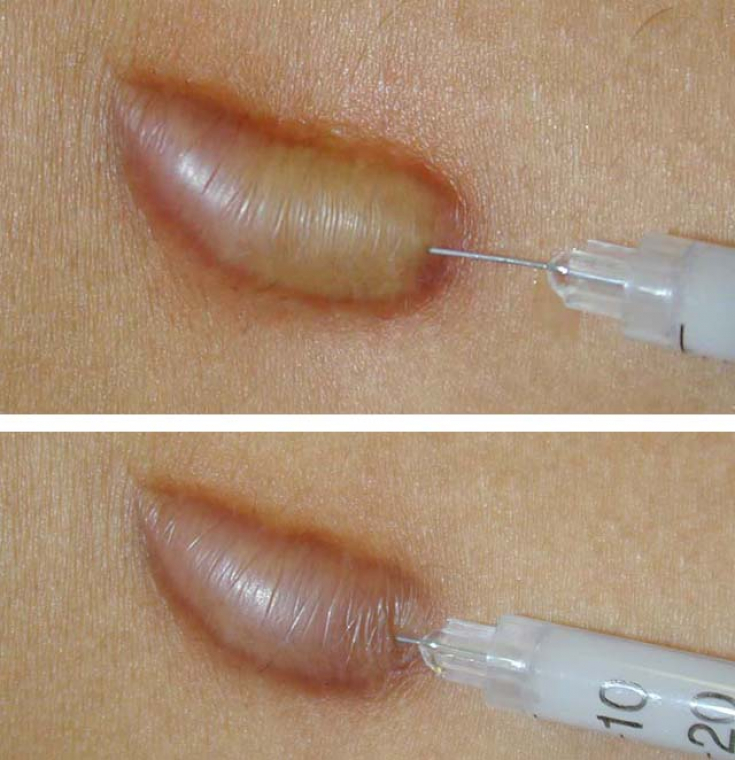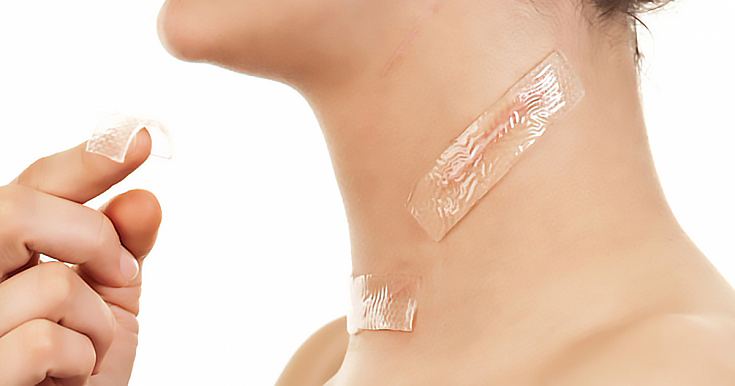Keloid scar – quite a serious and unpleasant problem for many people. The saddest thing about the formation of keloid scars – it is prone to proliferation and recurrence. Surgical interventions, industrial and domestic injuries, as well as some dermatoses lead to the development of keloids.
Despite many years of experience and the efforts of modern science, the problem of scar treatment and the achievement of a clinically and aesthetically significant result is still far from being solved.
Read this article about the causes, diagnosis, and treatment of keloid scars.
- Pathogeny and etiology of keloid scars: predisposing factors
- Keloid Varieties: False, True, Active and Stabilized
- Keloid Scar Treatment: The Latest Techniques and Preparations
Pathogeny and etiology of keloid scars: predisposing factors
Keloid scar – is an overgrowth of fibrous tissue that occurs at the site of an injury such as a laceration, surgical scar, acne, or sometimes spontaneously. Keloid belongs to the group of pseudotumor fibromatoses.
Follow us on Instagram
There is still no consensus on the etiology and pathogenesis of keloids. Of the general factors, the state of the immune system plays a leading role, followed by hereditary predisposition, hormonal imbalance and blood type.

Race also matters – The Australo-Negroid race is more prone to developing keloids. The development of scars is affected by dysfunction of the endocrine glands, in particular the genital, thyroid, parathyroid, thymus and adrenal glands. Corticosteroids have the strongest effect on the cicatricial process .
Varieties of keloids: false, true, active and stabilized
Distinguish between true keloid and false or scarring. Acne keloid is a separate group. True keloid occurs spontaneously, for no apparent reason, on previously undamaged skin.
False keloid scars are most often formed after burns, injuries, including surgical interventions, and also as a complication of various inflammatory processes in the skin.
Both types of keloid scars in appearance and histological picture are very different from other pathological formations in the skin with which they are offered to be differentiated: dermatofibroma, dermatofibrosarcoma protruding, lipoma. Keloid and keloid scars protrude sharply above the surface of the skin, have a reddish or purplish-red color.
Atrophic scar treatment and skin rehabilitation: a case report
They are located mainly on the cheeks, around the mouth, on the front, on the back and side surfaces of the neck, sternum.
Treatment of keloid scars: the latest techniques and preparations
To date, there is no single treatment for keloids that is unequivocally effective for most people.
The choice of treatment method and the degree of its effectiveness depends on the individual characteristics of the skin, the age of the scar and its location.

For the treatment of keloid scars, laser resurfacing, X-ray therapy, compression, cryodestruction, corticosteroid injections are used.
The surgical method involves scar plastic surgery by excising old scars and creating new ones. Electrophoresis with lidase and hyaluronic acid is also used. Silicone patches, gels and creams are used as adjuvant therapy.
Mesotherapy, chemical peels, ozone-oxygen therapy, fillers, as well as injections of collagen-containing preparations will also help to solve the aesthetic problem of scars.
Modern treatments for keloid scars include injectables such as interferon, 5-fluorouracil, doxorubicin, bleomycin, retinoic acid, transforming growth factor beta-3, vascular endothelial growth factor (VEGF) inhibitor, a combination of hydrocortisone, silicon and vitamin E.
Keloid scar is also treated with photodynamic therapy or intense pulsed light (IPL). However, all of the above methods do not guarantee the occurrence of recurrences, so patients with keloid scars should be strictly monitored by their doctor.
Thank you for staying with estet-portal.com. You may also be interested in other articles in the "Cosmetology" section: Modern methods of therapy for hypertrophic and keloid scars







Add a comment